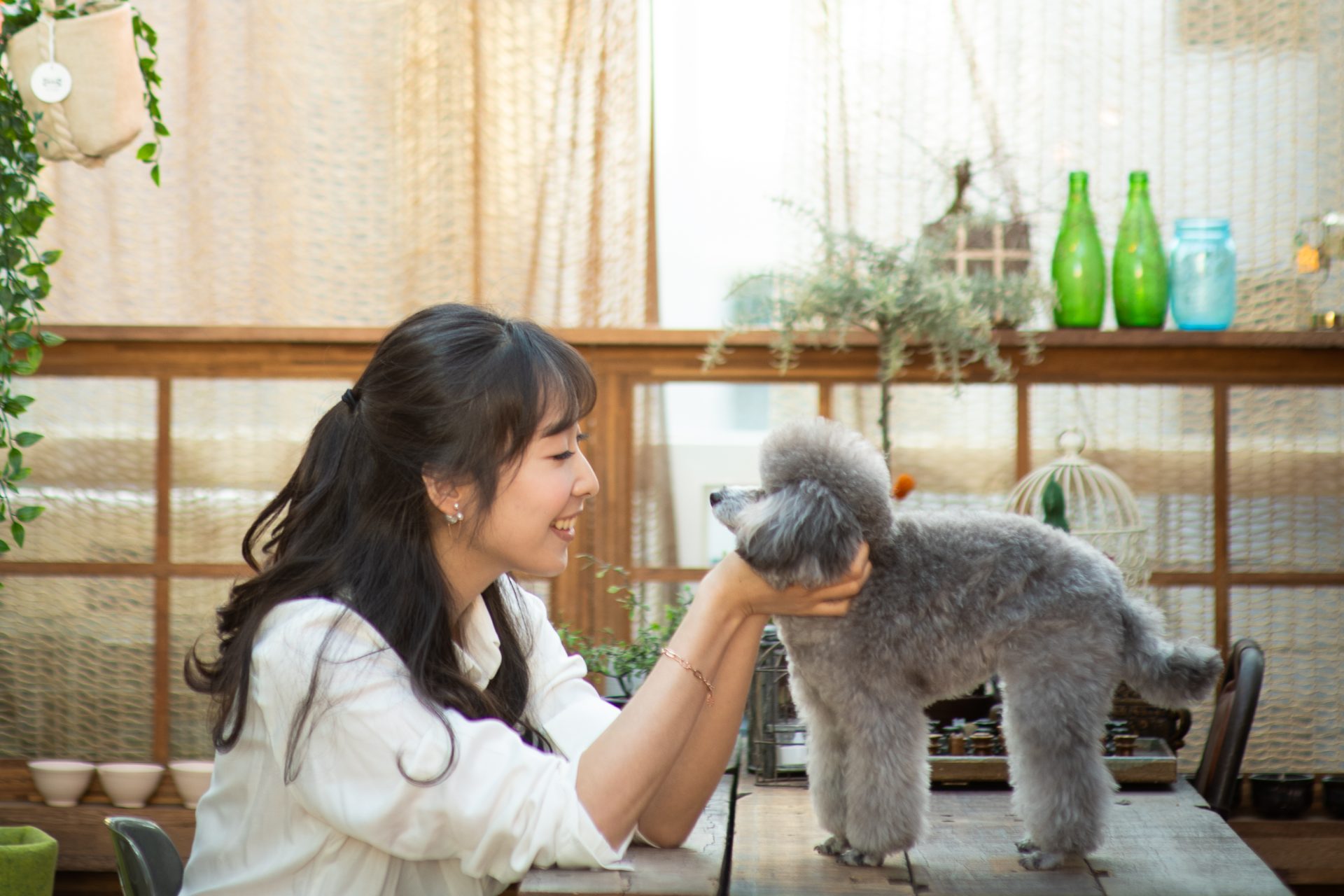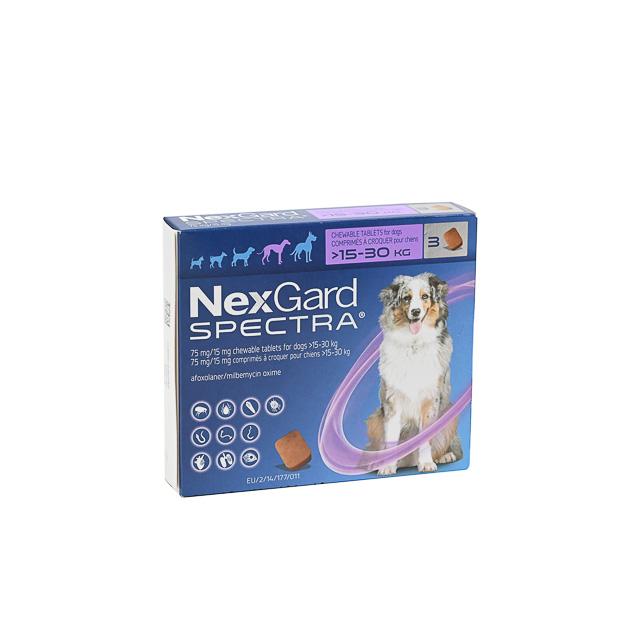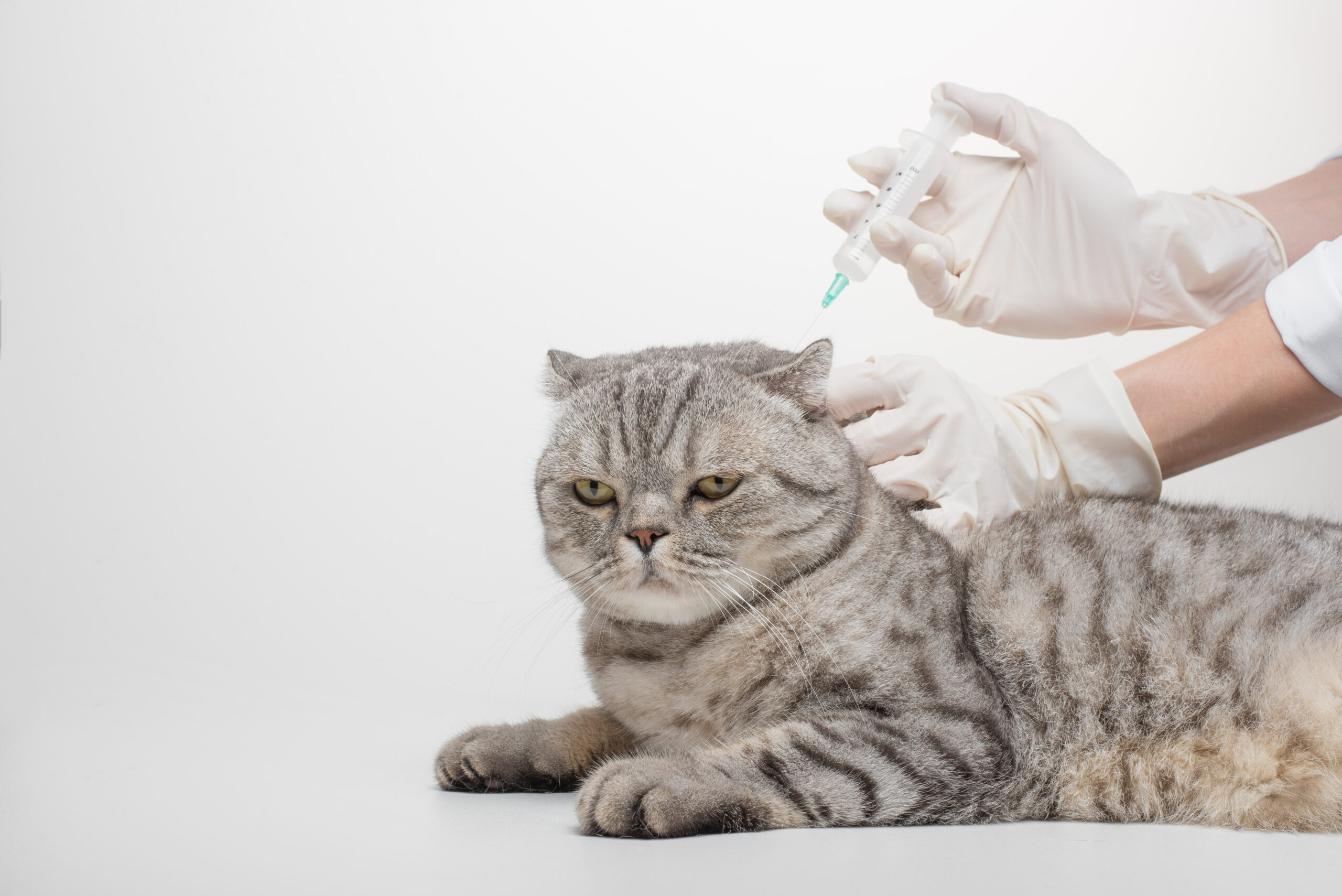It is common knowledge that keeping a large dog in a HDB (Housing Development Board) flat might not be legally possible. Because of the current list of HDB-approved canines, animal lovers cannot raise any breed of dog they would love to rear in an HDB unit.
Choosing a pet dog from the HDB approved list is the next logical step if you’ve decided to become a dog owner. Dogs are one of the most popular pets in the world, and for a good reason: they make wonderful friends. Dogs can be found in a wide range of sizes and personalities, but one thing they all share is an innate capacity to love and be devoted to their masters.
There are literally hundreds of different types of dog breeds, but we’ve limited it down to our list of 10 HDB-Approved Dogs That Are Easy to Train.
Why Select a Dog that is Easy to Train (especially when you live in an HDB flat)?
Living in an HDB flat is a unique experience unlike anywhere else in the world. HDB flat owners live just meters away from each other, and encounters with pets will be a common affair for everyone living within the same block, including those who might not embrace pets. Therefore, It’s important to choose an HDB-approved dog breed that can adapt to your living environment, readily learn new commands, and not get you into trouble with the authorities if any complaints from a neighbor have been filed against you.
This is why training is an essential responsibility for every dog owner. With proper training, dogs can learn to be more docile and quieter, which will also help to alleviate the anxiety of potential neighbors who might be frightened of dogs. This could then also be a first step towards enlightening your neighbors that dogs are incredible companions that could bring a joyful experience to their lives too. Ain’t that pawtastic?
Without further ado, here are our list of top 10 HDB-Approved Dog Breeds that are Easy to Train.
10 HDB-Approved Dog Breeds that are Easy to Train
Poodle

Poodles are notable for their huge personalities in addition to their intelligence and devotion. This breed is typically amiable toward people, children, and even other canine species. They are known for their curls or wavy fur. The manner in which they are bred can result in three distinct sizes of poodles: the standard-sized (medium-sized), the toy, and the miniature. They are also quite good at adjusting to new environments!
This breed has been deemed suitable for housing in HDBs because of its reputation for being easy to teach, active, and talented. The days that are shared with a poodle can be filled with excitement since these dogs enjoy exploring new environments, going for walks or runs, or bonding with their human friends.
Tips to Train Poodle
Train your Poodle to deal with separation anxiety
Although poodles normally lack aggression, separation anxiety disorders might cause them to mistakenly perceive everyone around them as harm. So, it is important to make them deal with their separation anxiety issues. For this, place your Poodle with care in a confined space. Go ahead with your preparations as if nothing “major” is about to happen. Putting a favorite toy into the area where your Poodle is may help distract them if they are able to see the door you are leaving via. Try to make a silent exit, with no words being spoken. Your Poodle may develop separation anxiety if you use the word “goodbye” every time you leave it alone. Start with short absences and slowly extend it as the routine gets more frequent and receptive over time.
House-train your Poodle
Poodles often need to pee or defecate, sometimes with little to no warning at random spots. But, with a proper house-training plan, they can easily learn to pee or defecate properly.
Poodle puppies benefit most from early and consistent housetraining, though it may take more time if your Poodle is an adult. Hence, you should start house-training as early as possible by taking it outside on a regular schedule. Along with time, your pet poodle will be able to maintain a regular schedule for “nature calls”.
Also, learn to read your puppy’s body language; circling is a common sign of urgency, so if you notice it, be sure to take it outside.
Train your Poodle not to jump on people
Poodles are an incredibly affectionate breed and they love to greet their pawrents or guests by jumping onto them. They might look incredibly cute while doing it but do not always give in with treats or your attention as they will need to learn to curb their excitement. Instead, Initiate a contrasting action such as a stern “sit” command and you can reward it for its obedience.
It also needs to stay still while you wait to give her the prize so it can fully understand that it needs to curb its excitement.
Pug

The lovable Pug is one of the best breeds of lapdog to bring into your HDB apartment. This small breed is well-known for its enthusiasm for making its owner happy.
These dogs have a positive outlook on life and can become excited when they see new people and food. Pugs do not bark excessively and are, therefore, less likely to create excessively loud noises; they are a common pick among the breeds that have been certified by the HDB.
Tips to Train Pug
Train your pug to stop whining
Pugs, in general, are friendly and love being with their hooman. This is why there’s a good chance that the Pug will become your constant companion, follow you wherever you go and might start to whine when you forbid it.
If your pug is always whining because of your command, it’s time to do something about it. Start by turning your back on them and ignore their whining. Do not respond to them in any way until they stop. When they finally quiet down, you can reward them with a tasty snack and some words of praise. They will soon learn that when they stop whining, good things happen and at the same time, they learn to be more independent too.
Train your pug to chew on the right items
Pugs have a tendency to chew on anything that moves and it is important to train them to only chew what can be chewed. Otherwise, there might be collateral damage. Try putting a treat or something such as your Pug’s favorite chew toy in front of it, then praise or play with the dog when it comes for it.
It could be helpful to use a leash or harness to prevent the dog from getting to the item as well. However, do take note that a collar might not be the best option for this specific breed as it might cause damage to the trachea.
Motivate your Pug to exercise more
Unlike dogs that belong to a working breed such as a Jack Russell, Some Pugs might be less active than others and If your Pug happens to be lazier, it is important to motivate your pug to exercise more to prevent problems such as obesity or heart disease.
Try spending some time to understand what your Pug loves and that could be a great starting point to structure quality play time, which could help your Pug to burn more calories. It could be in the form of games, walks, slow runs or even a play session at a dog run. However, it is best not to take your Pug out to exercise under the hot sun as Pugs are a brachycephalic breed and they tend to overheat easily under such conditions. So, try sheltered open areas or when temperatures are cooler.
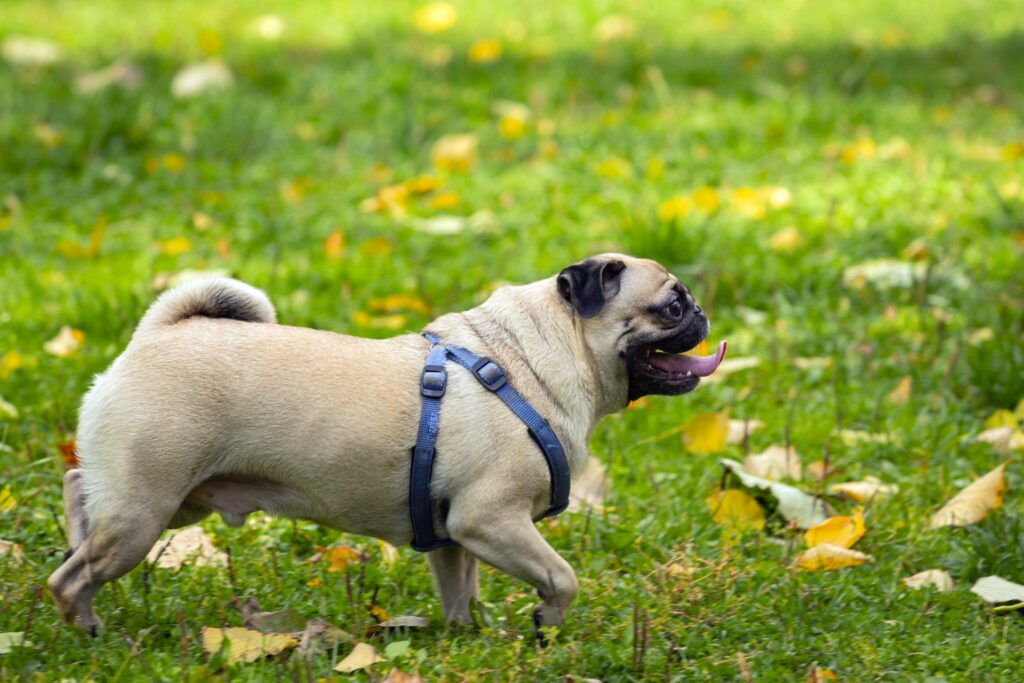
Shih Tzu
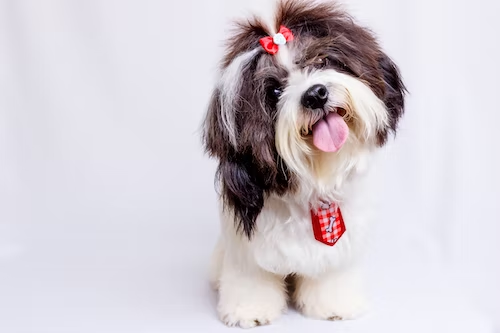
This dog, also known as a “Lion Dog,” is devoted and affectionate toward its owners. To some, they might seem to present a menacing appearance, but in reality, they are actually quite warm-hearted and joyful.
Shih Tzus generally look forward to spending quality time with their owners, whether through active play or simply hanging around. They are also quick learners that can pick up easily.
Tips to Train Shih Tzu
Train your Shih Tzu to prevent inappropriate chewing
A Shih Tzu’s natural tendency to seek out something to chew can become an issue if there isn’t enough objects for it to chew on. This is why it is important to get several chew toys for your dog. Taking your Shih Tzu out for walks on a regular basis and puppy-proofing your home are also feasible methods that can help prevent inappropriate chewing.
Engage in leash training with your Shih Tzu
Shih Tzus are a curious bunch of dogs. Hence, It is common for them to sniff and explore environments. At times, a Shih Tzu might become so focused on scents that it might tug on his leash to follow the trail which might risk injury or accidents. Hence, leash training will be key to prevent it.
Having a well-behaved Shih Tzu on a leash will also make walks more enjoyable for both the dog and its owner. Try keeping your Shih Tzu’s attention by holding a treat in your hand, and reward it regularly for staying near to you on walks. Stop moving forward if your dog starts tugging. This will help them learn that tugging on a leash is an undesirable behaviour over time.
Allow your Shih Tzu to Socialize
Even though Shih Tzus are very friendly by nature, they can still develop a fear of strangers and other dogs if they aren’t socialized early enough. You may help your dog become more sociable by taking it on frequent outings, rewarding good behavior outside with treats and praises.
Maltese
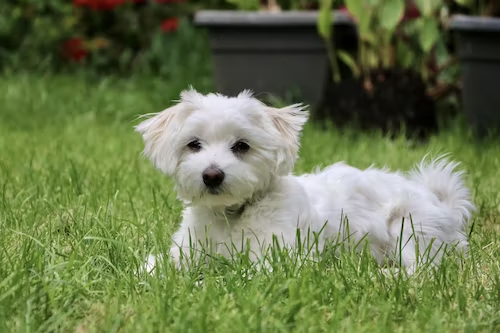
The Maltese is consistently ranked as one of Singapore’s most popular canine breeds and we are glad that this breed made it to the HDB-approved list of dogs. It is a toy dog that is also known for its active disposition and its affectionate personality.
They are able to adjust easily to their living environments and tend to get along easily with families, children, and other canine companions as well. In spite of the fact that they are so small, they can still be quite perceptive and will inform you right away if they detect any unfamiliar faces or sounds in their environment. In addition, they take pleasure in picking up new skills, so teaching them is not difficult at all.
Tips to Train Maltese
Train your Maltese to deal with separation anxiety
Perhaps more so than many other dog breeds, the Maltese has a significant desire for human company and might feel uncomfortable when left alone for extended periods of time. In times of stress or discontent, they may resort to excessive chewing or barking. So, be sure that your Maltese has plenty of interesting and cuddly toys to play with.
Providing your Maltese plenty of time to exercise could also help prevent them from experiencing separation anxiety.
Train your Maltese not to bark excessively
Malteses could have the tendency to bark excessively for attention. But, if they have been exposed to socialization at an early age, this should not be a problem.
Otherwise, if they were to bark at you directly, simply ignore them to let them know that barking will not get them attention. Reward them accordingly for stopping as well.
Potty-train your Maltese
Malteses might just be one of the easiest dogs to potty-train as their willingness to learn from their pawrents is impeccable and they love to keep themselves clean.
Instructing them to head into their crate when necessary can also be a good way to help them hold for a little longer but eventually, a designated spot in the home has to be selected. Watch out for signs such as sniffing, fidgeting and circling before squatting and bring it to the designated spot to complete the process. When this routine has been established long enough, your Maltese should know where it needs to go when it is time to urinate or defecate.

Pro Tip
If your dog happens to be feeling anxious or stressed at home consistently, Another very effective solution to help calm dogs down in your home is the Adaptil diffuser. It is a clinically proven solution formulated to treat stress and anxiety for dogs by releasing dog appeasing pheromones (DAP) into the environment and reducing stress hormone levels in the body. Especially suitable for dogs living in HDB flats that are experiencing separation anxiety or are overly wary of visitors and passerbys.
Yorkshire Terrier
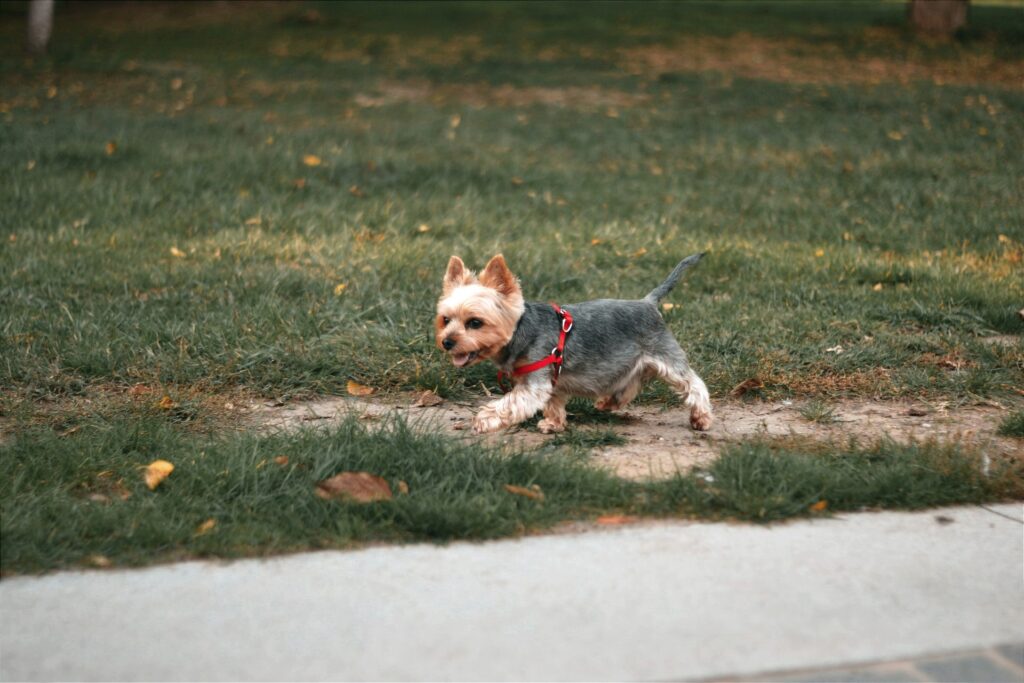
The Yorkshire Terrier is a miniature terrier that weighs no more than seven pounds and is adorned with a ground-length, silky coat in shades of steel blue and a beautiful golden tan. Don’t be fooled by the Yorkie’s small size though. Yorkies are great tiny guard dogs because they are intelligent and adaptable.
Tips to Train Yorkshire Terriers
Train your Yorkshire Terrier to stop barking too much
Yorkies might grow to possess an innate lack of aggression if they do not get a chance to socialize enough or undergo training, and excessive barking could be one of them. So, do allow them to socialize in places such as dog parks or have some time in the outdoors.
Engage in exercise with Your Yorkshire Terrier
After all, Yorkies belong to the Terrier class of dogs which possesses a natural hunting instinct. Therefore, by bringing them outdoors regularly, it could also bring the opportunity for your Yorkie to engage in intensive exercises that could help them release pent-up energy and feel more at ease.
Train your Yorkshire Terrier to stop begging for food
As the owner, you may find it difficult to say “no” to Yorkie’s enticing grins, which usually serve as an invitation to beg. Unfortunately, many Yorkshire owners enable their pets’ bad begging behavior by feeding them at the table. Potential side effects include gaining weight, experiencing digestive problems, and frequent diarrhea. Never look directly at a begging Yorkie. If he tries, avoid getting pounced on by twisting and turning away from him.


Pro Tip
Dogs with silky fur are attractive indeed. However, the shine could still fade if it does not get maintained properly. Thankfully, it does not have to be difficult, simply brush it regularly to keep them straight and untangled. If possible, use a quality conditioner with ingredients such as aloe vera or oatmeal which will also help to retain the shine of the fur.
Australian Terriers
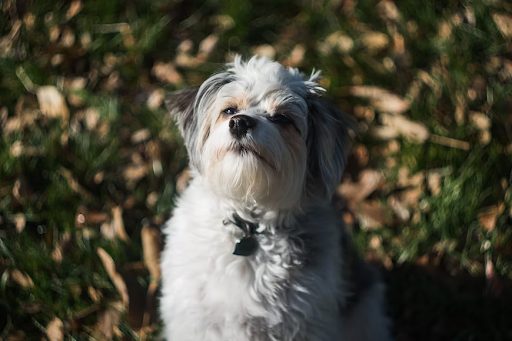
The confident Aussie breed embraces life with plenty of ancient terrier curiosity and grit. The Australian Terrier is a little but strong, self-assured terrier with a topknot of smooth, silky hair that contrasts in texture with its generally coarse coat.
This hard-working terrier has a long neck that adds a touch of grace, and its black eyes shine with sharp intelligence. They are reported to be quick learners while being trained and can be attentive watchdogs.
Tips to Train Australian Terriers
Train your Australian Terrier to stray away from its hunter instincts
Just like the Yorkshire Terrier, Australian Terriers are naturally prey-driven, therefore, if they spot something moving, even if it is a cat or dog, they might have the tendency to chase or bite it.
To overcome this, one of the best things you can do for your Australian Terrier is to expose them to as many new people, places, and things as possible. Even better at a younger age. In this way, they will learn to adapt better to being a domestic dog and understand there is no need to chase after everything.
Train your Australian Terriers not to bark at other dogs or people
With its watchdog nature, the Australian Terrier could also be territorial but it can easily be negated with training. Try saying the word “Quiet” in a firm and calm tone whenever the Australian Terrier begins to bark. Do note that you should hold off on rewarding them until they’ve stopped barking. Continue the routine for a while and you should be able to see results.
Train your Australian Terriers to stop being stubborn
Some Australian Terriers might be a little stubborn because of their boundless energy and innate confidence. It is best to negate its stubborn trait from a younger age but if your new Aussie Terrier is a little older, engaging them in frequent short and fun training sessions will be great to educate them on the importance of listening to your instructions.
Mongrel or Singapore Special

Commonly found in deserted areas as strays, the Singapore Special is a mixed breed native to Singapore. Some refer to them as Mongrels and they can range in size from medium to large. It is gaining popularity as one of the most well-liked canine breeds and if large dogs are your preference, these could be one of the little choices of HDB-approved dog breeds to look at thanks to Project ADORE for rallying the adoption of this breed of dogs in animal shelters.
They may be territorial while they are on the streets, but that doesn’t mean that they can’t be nice and cuddly! In fact, with proper training, they can still be extremely loyal and obedient.
Tips to Train Singapore Specials
Teach your Singapore Special to avoid engaging other dogs
Singapore Specials tend to undergo a tough life when they were with their own pack or alone in the streets and have to often fend for themselves to survive. Hence, they may be wary of the presence of other dogs around them and might engage them to display dominance.
For a start, always keep them on a leash at arm’s length from other pets and reward them with a treat anytime you command it to stop barking, engaging, or displaying signs of aggression toward other dogs. Repeat this practice over time, and it should learn to become tamer.
Train your Singapore Special to socialize
If they tend to be wary of other dogs, they might avoid opening up and socializing with other dogs in a friendly manner too. This might require some patience, but with time and dedicated preparation, they will definitely be able to adapt to domestic dog life.
Positivity is key here. So, do show your Singapore Special the beauty of being a domestic dog with plenty of playtime and exercise. It should display more obvious signs of affection and that will be a good signal for you to start bringing it to places like dog parks or events.
Train your Singapore Special to avoid jumping on humans
Once it has opened up more, you might notice your Singapore Special beginning to jumping onto guests or even yourself. This is a clear sign of affection as well as attention seeking typically displayed by Singapore Specials.
However, it is also important to teach it not to start climbing toward everyone all the time. Begin by telling onlookers not to embrace such behavior, signal to your dog to come to you and command it to “sit.” If all steps are a success, a treat should always be rewarded.
Jack Russell Terrier
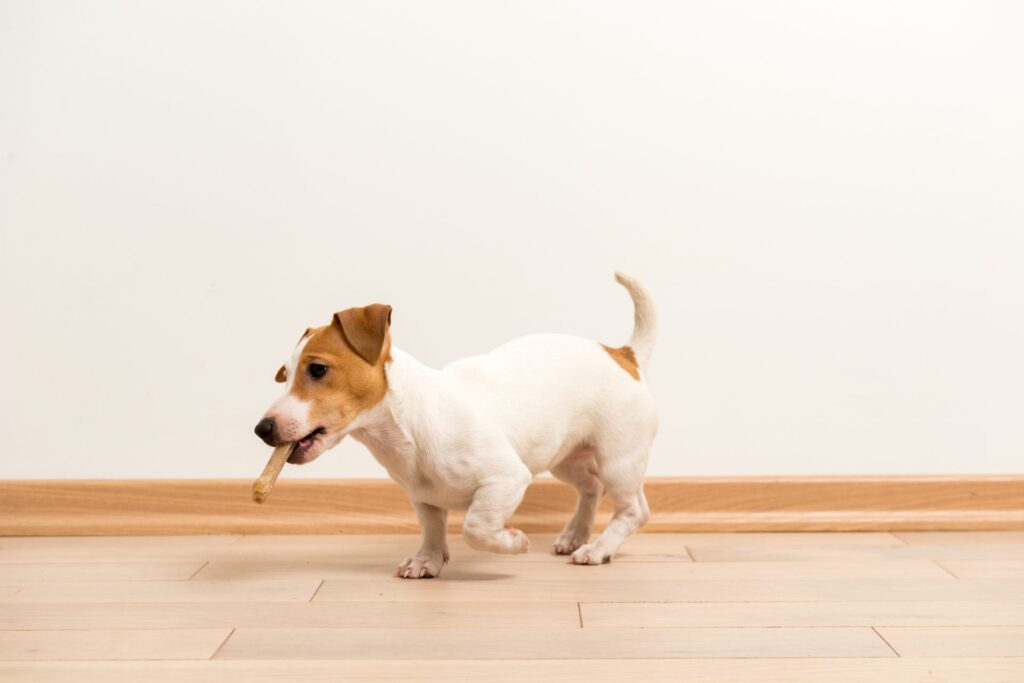
Despite its cuddly appearance, the Jack Russell Terrier is a hardworking dog with a positive attitude and plenty of energy. These cheery little guys stand about 10-12 inches tall at the shoulder, yet their square frame is jam-packed with personality. Their intelligence is shown in their dark almond-shaped eyes and their movable V-shaped ears.
The three different coat colors are all primarily white with tan, black, or a combination of the two as markings. Jack Russells are smart, quick learners. Because of their high level of activity and their kind and friendly nature, pet owners & families adore these dogs. When they are around, there’s never a dull moment, but only wonderful companionship.
Tips to Train Jack Russell Terrier
Train your Jack Russell to ignore passerbys or visitors
Jack Russells are highly sociable dogs and especially when there are passerbys or visitors, they tend to get really excited, too excited sometimes by running around the home. In this case, a distraction will be effective. For example, when someone knocks on your door, distract it by offering a snack in exchange for calm behavior as a way to divert their focus.
Try to also ensure that your Jack Russell is given its own designated space like a bed, as a dedicated platform to head to upon every distraction. If vocal commands don’t have the desired effect, try using a clicker or a toy instead.
Train a Jack Russell to pay attention
Their intense drive to hunt as a working dog could make them too focused on something they are eyeing towards. Therefore, they should be trained to listen to you whenever you need them to. Start by emphasizing the importance of your dog looking to you for cues. To grab their attention, use a vocal command or clicker, then praise them for doing a good job. Call out their name loudly and clearly just before mealtimes, walks, and other fun activities to ensure they’ll come when called.
Make your commands in a lighthearted manner, and they will jump at the chance to please you. Never shout at it as it might induce anxiety instead.
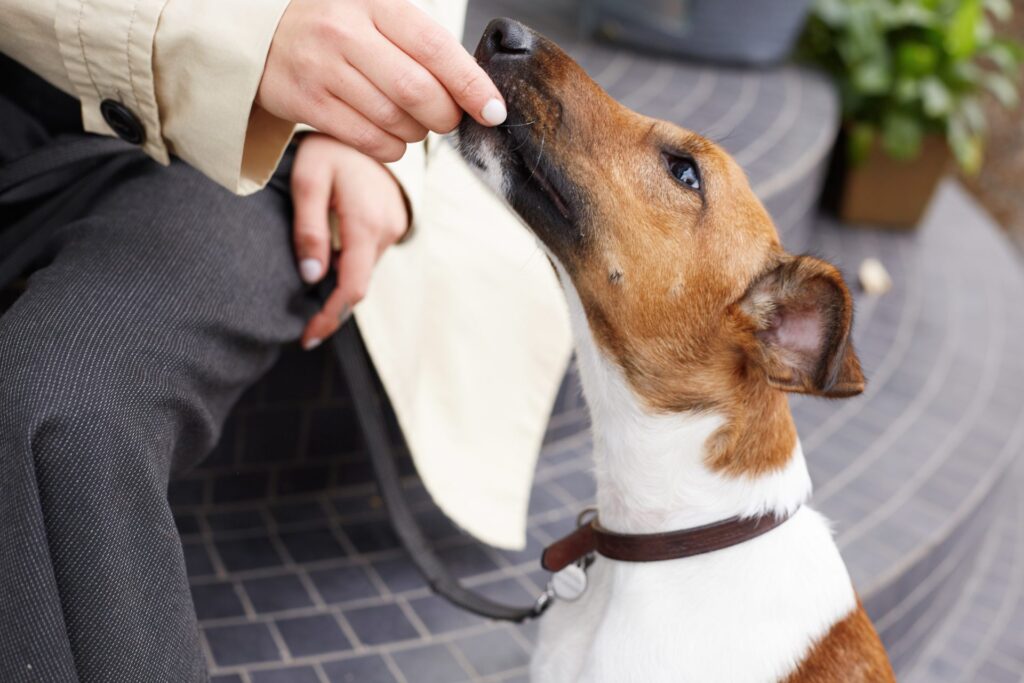
Train your Jack Russell to not be stubborn
Jack Russells are constantly looking to be engaged in activity such as chewing on a toy and there will be times that you will need it to stop. For a Jack Russell, It’s important to have a simple command like “Drop” stored in its mind. Catching them will very likely provide the wrong signal that you are playing a game with it and you wouldn’t want your dog to swallow it to prevent you from “stealing” their prize too.
In this situation, trades are a great solution. When a scenario like this happens, signal with a “Drop” command and then offer a treat in exchange. Repeat the procedure of offering the toy and repeating “Drop” until you can do it without referring to treats.
Pomeranian

Pomeranians are known for their friendly demeanor and endearing appearance. It is no wonder why it is also a popular breed in Singapore. This little breed, which is sometimes referred to by the adorable nickname “Pom” or “Pom Pom,” is a well-liked option for first-time dog owners.
The dog may look sweet and naive on the outside, but Pomeranians also tend to possess a strong will and a huge personality. They are lively, self-reliant, and playful, in addition to all of these qualities. As soon as you have won their love and earned their trust, you will have a loving lapdog that will readily adjust to the setting in which you live.
Tips to Train Pomeranian
Training a Pomeranian on a leash
Like many little dogs, Pomeranians struggle with a collar or leash because they prefer to roam without them. But, it is always possible to help them adapt to it. Establish an adapting phase by simply leashing it and then let it roam around freely at home. Avoid yanking or pulling on it at this point in time as it might ruin the adapting phase.
Once it is comfortable with a leash, slowly increase your pressure on the leash. Your pomeranian might feel uncomfortable for a start but Incentives like snacks and compliments should help to keep them happily leashed.
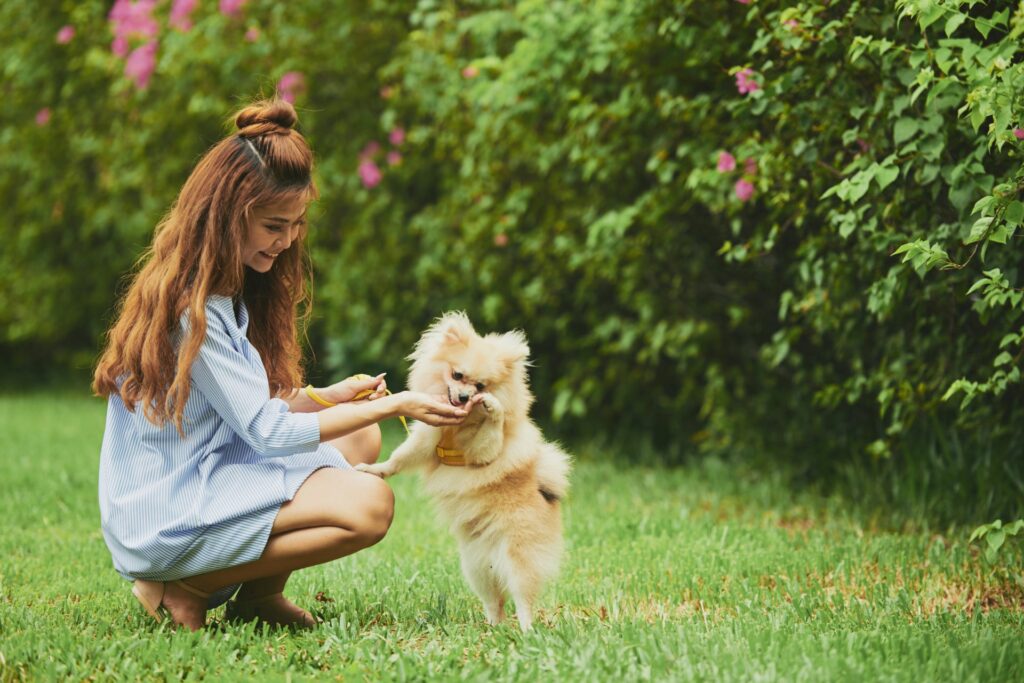
Train your Pomeranian to fetch
Most dog owners enjoy playing fetch with their Pomeranian, so it can be irritating when your dog ignores your throws or takes the toy away without returning it. Every dog can be taught to play fetch, even if it doesn’t happen naturally to them. If you throw something, your Pomeranian will almost certainly go for it.
Begin by throwing a toy for your puppy to retrieve. If you want to teach your puppy a trick, you can show him a treat when he has the toy in his mouth and then calls him back.
Train Your Pomeranian to not bark excessively at every stranger or passerby
Though small in size, Pomeranians are great watchdogs and are generally very alert about their surroundings. They will tend to warn their owners about strangers or passerbys by barking and this could be an issue if it becomes excessive. But, thanks to their high intelligence, teaching them to bark less is not as challenging as you think.
Start with a firm “quiet’ command as soon as it starts to bark excessively and provide a treat as it stops. You are also able to establish a comfortable dedicated space for your Pomeranian if it tends to go to the door too often to bark at strangers. Fill it with its favourite toys that could help to distract its attention from strangers and establish a routine for your Pomeranian to stay there with frequent “stay” commands until it knows it needs to be there independently.
Chihuahua

Despite being the tiniest dog in the world, they have won the hearts of thousands of people in Singapore. This breed is well-known for its endearing qualities, particularly its charm & sweetness, all of which go hand in hand with a likeable and lively temperament.
It shouldn’t come as a surprise that they have remained as one of the most popular breeds in Singapore all these years. HDB flats are the perfect setting for these canines, as they are not only compact in size but they can also be excellent watchdogs.
Tips to Train Chihuahua
Socialize to reduce aggression
Chihuahuas love attention and by exposing them to other dogs or individuals can help your Chihuahua learn to treat them as enjoyable additions to his or her world rather than potential aggressors. Instead of rewarding your Chihuahua for undesirable behaviors like barking and growling, try using positive reinforcement to praise it when it behaves well among other people and dogs. You can diffuse a difficult situation with your Chihuahua by distracting or redirecting it.
This is also a great opportunity to practice basic commands like “sit,” “stay,” and “gentle” with your Chihuahua in a calm, firm manner.
Train your Chihuahua to follow a regular feeding schedule
The metabolism of a smaller dog tends to be quicker. Most of the time, Chihuahuas will try to set the table for themselves when it comes to mealtime. If permitted to overeat, little dog breeds are particularly vulnerable to developing obesity. Positioning yourself as the “leader” and maintaining your Chihuahua’s health can both be greatly aided by sticking to a regular feeding plan. Once you’ve established yourself as the alpha, they’ll follow your lead on when to eat.
Potty-train your Chihuahua at home
Due to their size, Chihuahuas have smaller bladders. This means the Chihuahua will defecate or urinate more frequently than most dogs. They are also sensitive to cold/wet weather which might discourage them from releasing their waste outside if it is a rainy day. This is why potty-training at home will be essential for Chihuahuas and it can be done with a structured training.
Begin by establishing a designated spot for your Chihuahua to go to the bathroom, and consistently take them to this spot every time they need to go. This routine will help them learn to associate that spot with going to the bathroom. A consistent command such as “go potty” can help signal to your Chihuahua that it’s time to go to the bathroom too. Remember to reward them with a treat after every successful attempt and never reprimand them for every accident as this will discourage them.
How to Adopt Dog breeds in Singapore?
When dog owners demonstrated responsibility and suitable avenues for dispute settlement were in place, residents became more receptive with having bigger dog breeds in the neighborhoods. As a result, In May 2014, Project ADORE officially became an ongoing program.
HDB residents can adopt local mix breed dogs (or Singapore Specials) up to 55 cm tall via Project ADORE. Again, all prospective pet parents must apply for a dog license to legally own a dog in a HDB flat. It is a violation of law to keep an unlicensed pet in an HDB flat, and the penalty is fairly severe, with fines of up to $4,000 for not complying with HDB pet rules and violating HDB pet policies.
To further guarantee that adopted dogs do not become a nuisance to the community, new owners will be required to enroll them in obedience training classes and accept a Code of Responsible Behaviour (CORB).
Conclusion
Rearing a dog in a HDB flat does come with its own set of restrictions. But, it is always possible to enjoy the process of developing a good relationship with a new furry addition to the family. Like most pets, all it takes is some dedication, time, and care to carefully train them up to be a lovely dog that embraces furkid life in a HDB flat.
We hope this guide has provided some useful tips for you and if your new furkid happens to display strange behaviours or has fallen ill at any point in time, be sure to seek out the vets Zumvet for help at the comfort of your own home.


